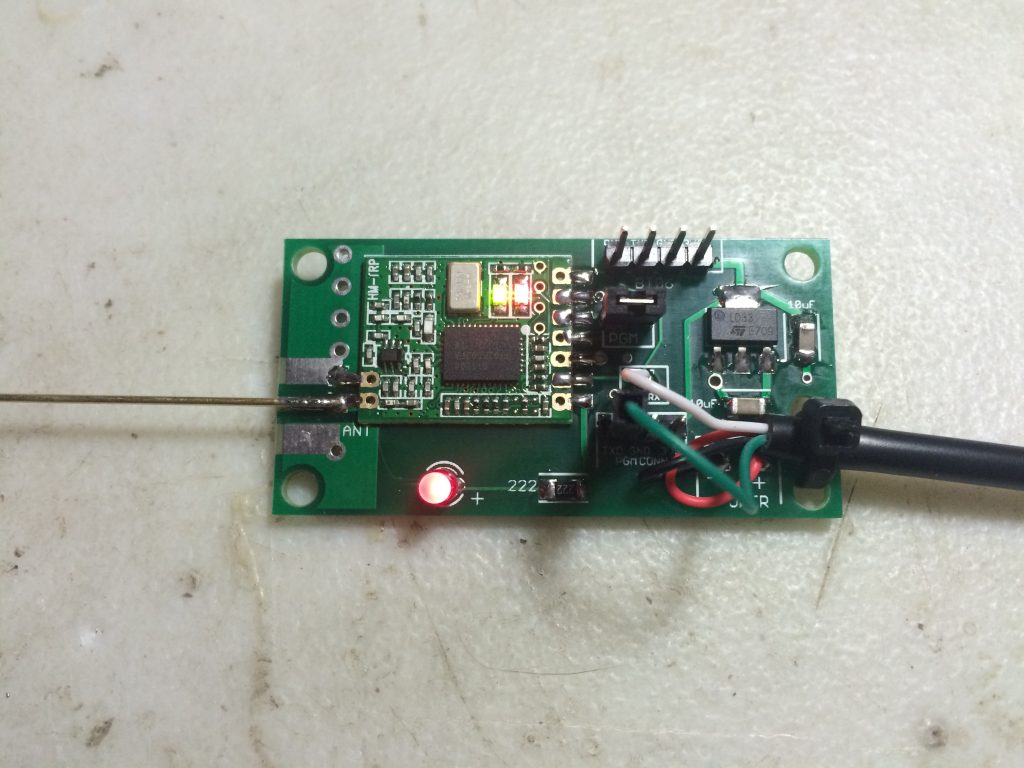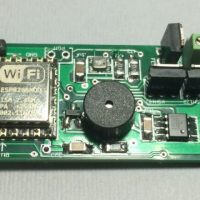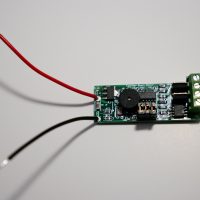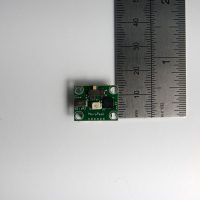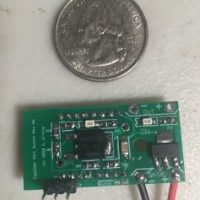Description
The Eggfinder RX connects to your phone, laptop or tablet using Bluetooth option, you can send the GPS data to an Android device and get the coordinates and the track of your rocket using programs such as GPS Rocket Locator or Rocket Tracker. It’s ideal for setting up a “ground station” receiver with a laptop/tablet to get a real-time track of your rocket.
The Eggfinder Mini is the smallest GPS transmitter available, a mere .7″ side x 3.25″ long INCLUDING the antenna. It will even fit into an 18mm body tube, and it uses a special stubby antenna to make it even smaller. It’s so small that you can easily wrap it up in a Nomex “burrito” and attach it to your shock cord… no special sled necessary. There are some 3D-printed mounts available specifically to mount it in a 29mm or 38mm nose cone. It is functionally identical to the Eggfinder TX transmitter, except that there’s no place to add an OpenLog datalogger.
The kit includes:
- The Eggfinder Mini TX kit
This installs in your rocket and transmits the rocket’s GPS location to the RX dongle.
Two antennas, a wire antenna for the RX dongle and a mini-stub antenna for the TX. - The Eggfinder RX Dongle Kit (optional, see notes below)
This dongle receives the GPS location from your rocket and pairs with your phone using Bluetooth. Apps such as the GPS Rocket Locator can then be used to show you the position of both you and your rocket, making it easy to find your rocket in large fields. The RX dongle kit can optionally be provided with an LCD screen which provides you summary data from the transmitter, including the GPS position. Note that Apple iOS users cannot use Bluetooth GPS modules due to limitations of the Apple operating system, and therefore we recommend the LCD screen option for Apple iPhone users.
Important notes:
- The receiver (RX) is optional from a purchase perspective, but required from a functionality perspective. We offer the option to buy the transmitter only to allow customers to buy multiple transmitters and install them in multiple rockets, but you will require a receiver to use the transmitter.
- These tiny GPS units are accurate to about ten metres and, as such, they will not be able to walk you to the exact position of your rocket. If your rocket is visible (e.g. you have a large parachute or the field is open), ten metres is easily close enough to spot it. If your rocket is small and hidden in the foliage or crop it may help to install a beeper or long streamer to help you for the last ten metres. For high power rocketry this is not normally a problem, as the rocket can usually easily be seen by the time you get close.
- These kits are not a complete plug-and-play solution for your tracking needs and, even when built, need final integration work. You will need to pick suitable batteries, switches and identify a way of installing the tracker in your rocket. You may also want to build an enclosure to hold the receiver unit. Please contact us if you wish for us to design and build a suitable solution for your rocket.
- The first start-up of your Eggfinder transmitter may take a very long time (5-20 minutes) to obtain a GPS signal, especially if you have not turned it on for some time. Please be patient and look out for the blinking orange light to indicate that the GPS has a full lock. When the GPS has locked once it takes less time to lock a second time.
- When flying the tracker please ensure that you power up the GPS tracker before flight, await GPS lock and the flashing amber light.
Only then should you install it in your rocket ready for flight. It is critical that you ensure that this light is flashing before launch. We recommend choosing flight batteries with enough capacity to last the full rocket preparation time, the time it takes to launch, fly and recover with additional capacity remaining to account for any unforeseen flight events. These batteries should be fully charged before your flight and you may wish to consider having multiple batteries in the field ready for use or having a way of charging batteries between flights. We recommend a minimum of 150mAh battery capacity and recommend 200-300mAh for most flights. You may wish to consider larger battery capacities for launches requiring extra preparation, flight or recovery time.


